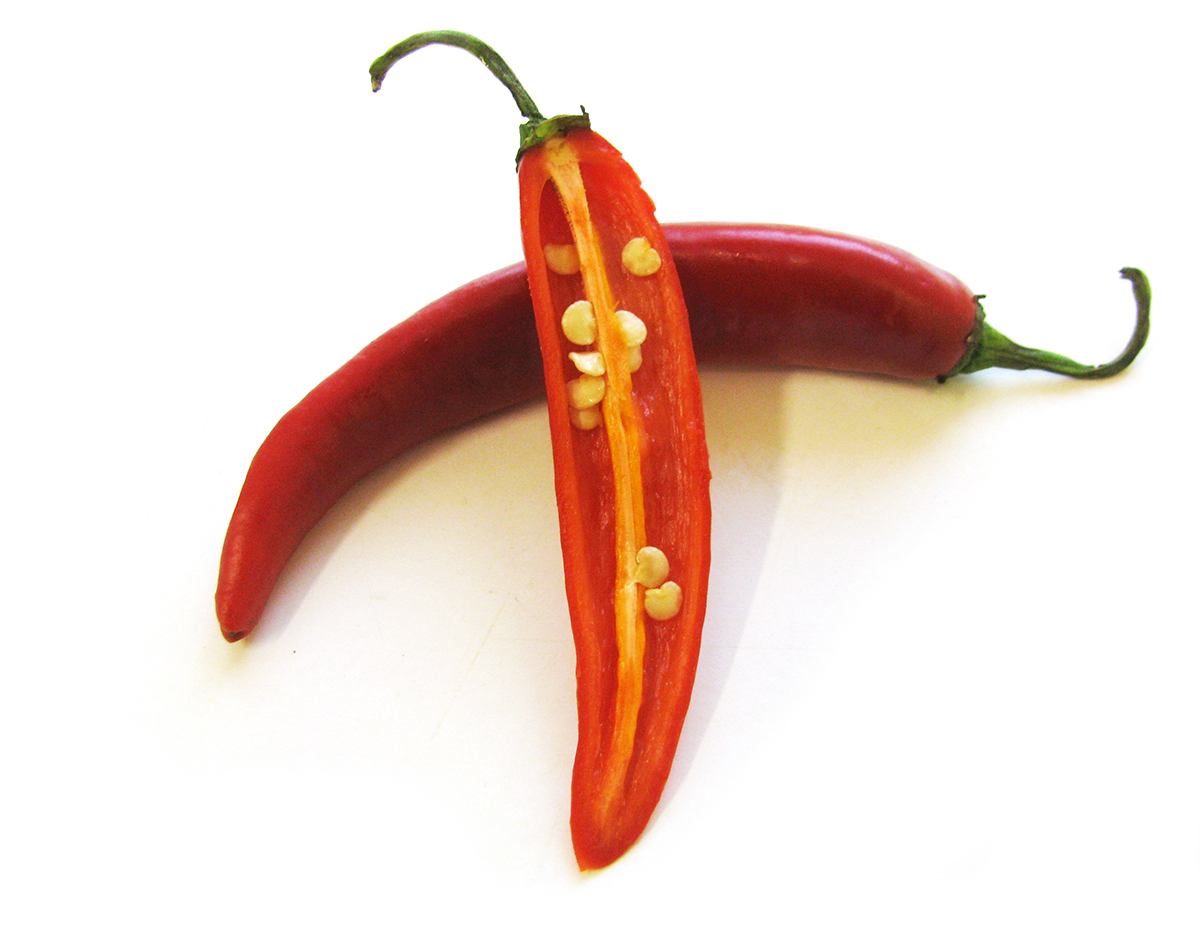Capsicum and chilli
This page has information about growing capsicum and chillies at home in the Northern Territory (NT).
About capsicum and chillies
Name: capsicum, capsicum annuum (solanaceae), chillies, capsicum frutescens.
Origin: tropical Central America.
Distribution: grown commercially in all tropical and sub-tropical countries.
Australian distribution: capsicum and chillies are grown in most regions in Australia that have a temperature range of 15 to 32 degrees Celsius.
Description
The plants are herbaceous annual or biennial, meaning they are green, not woody, and last from one to two years. They can grow to 90cm in height.
Leaves are variable in size. They run alternate and singly along the stem.
Flowers are white, pale green or purple. They are pollinated by wind or insects.
Fruit can be green, yellow, orange, red, purple or black. They can be round, cone shaped, elongated, oblate - like a squashed ball - or bell shaped.
The mature fruit can be 6mm to 340mm long.
Preferred climate and soil
Capsicums and chillies thrive in warm conditions. They are particularly sensitive to cold and do not grow below 10 degrees Celsius.
High temperatures above 32 degrees Celsius can affect pollination.
Rain and high humidity can increase the chance of diseases.
They grow best in deep, well-drained, medium-textured soils. They will not tolerate salt.
Varieties
There are many varieties available which can be chosen to suit the area where you live.
Capsicums
The main varieties of capsicums in the NT are bell and long sweet yellow.
Bell
Bell capsicums are the main type grown in the NT. They usually have four lobes and thick, sweet flesh.
Green and red are the most common colours, although some capsicums turn yellow, orange, purple or black. There are many varieties of bell capsicums.
Long sweet yellow
Also known as banana capsicums, these are long and tapered. They are harvested when yellow.
Chillies
Chillies are basically a type of capsicum that tastes hot due to the chemical capsaicin.
This chemical is more concentrated around the seed. The heat level of the chilli will depend on the type, variety and growing conditions.
There are many different types of chilli, from the small birds eye to the cayenne and the serrano.
Propagation
Chilli plants are grown as seedlings and planted out into mounded beds, generally with mulch and drip irrigation.
They can be planted 20cm apart in single rows or 40cm apart in double rows. They need to be watered well and protected from the wind.
Pests and diseases
There are several pests and diseases that affect this crop, including caterpillars, fruit fly, aphids, rots, wilts and viruses.
You will need to look after the crop to reduce loss and damage.
Fruit season
Around Darwin capsicums and chillies can be grown all year.
Harvest
Capsicums can be picked green as soon as they are a suitable size, at about 12 weeks, or left to mature and turn red. Chillies are picked at the right colour stage.
Storage
Capsicums and chillies should not be stored for long periods, or with fruit such as tomatoes that produce ethylene.
They can be stored between 7 to 13 degrees Celsius at 90% to 95% relative humidity. They can be stored for two to three weeks.
Eating
Capsicums are a popular vegetable eaten raw or cooked. Chillies are eaten raw or used in cooking to add flavour.
Chillies are also used as a herbal medicine to treat poor circulation, fever, colds, and digestive disorders. They have also been used as an insecticide spray.
Give feedback about this page.
Share this page:
URL copied!
